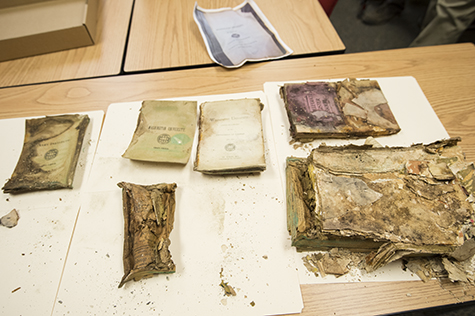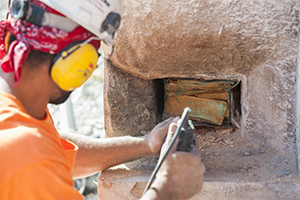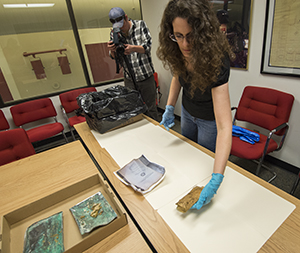
In 1902, Washington University in St. Louis leaders packed a cornerstone box with documents that paid tribute to the campus’ new gymnasium, chronicled life at the university and anticipated the 1904 World’s Fair.
“Those materials show us who we were, and what we valued more than 100 years ago,” said Sonya Rooney, university archivist. “It’s a fascinating snapshot of the time.”
Today, the university community is invited to create a time capsule of its own for the cornerstone of the Gary M. Sumers Recreation Center, scheduled to open in August 2016. Justin Carroll, associate vice chancellor for students, said the capsule will celebrate the central role the Athletics Complex plays on campus.

“We want to capture a slice of student life from this era,” Carroll said. “When it’s all said and done, I’m hopeful that the time capsule will reflect the diversity of our students’ interests.”
A committee of students and staff already have chosen some contents for the capsule, including a list of intramural, intercollegiate and club sports; photographs of significant events such as dance marathons, convocations and presidential debates; a piece of the original Francis Gymnasium floor; and letters from current players to tomorrow’s athletes.
University faculty, staff and students are invited to visit the Sumers Recreation Center Time Capsule site to submit their ideas. Recommendations will be accepted until Oct. 9.
Items must fit into a stainless steel time capsule, which is 20 inches tall, 16 inches wide and 9 inches deep. Materials will be placed in the time capsule at a special ceremony this November. Instructions will be left to open the time capsule in 50 years.

“By then, who knows how our future students will be using this facility or what new traditions they will have started,” Carroll said. “But I imagine they will be as curious about us as we are about those who came before us.”
To protect the artifacts, Rooney will print documents on acid-free paper, place photographs in Mylar sleeves and include desiccant packs in the airtight capsule to control humidity.
‘A rare peek into the past’
If only Rooney’s predecessors had taken such care. On Oct. 25, 2014 — precisely 112 years after the gym’s cornerstone ceremony — Rooney, Carroll and others gathered to extract the original copper box from the gymnasium’s cornerstone. After workers drilled for hours, Rooney removed the lid of the copper box and found a brick of crumbling documents.
“We were disappointed so little had survived,” Carroll said. “Still, it was a very exciting, suspenseful morning. It felt like we were getting a rare peek into the past.”
Rooney also was disappointed, but not surprised. A crack in the cornerstone allowed water to seep in and out over time. Only four pages survived: a map of campus and three pages from a course catalog.
Where time stands still
The 1902 cornerstone box uncovered in the Francis Gymnasium isn’t the only time capsule on the Danforth Campus. Cornerstones containing historic artifacts were set in eight of the original 11 Cope and Stewardson-designed buildings.
Students and university administrators also buried a time capsule in 2011 on the South 40, with instructions to be opened during the Class of 2011’s 50th reunion. Items included cufflinks from Chancellor Mark S. Wrighton, a CD of popular songs and copies of Student Life.
The good news was that Rooney not only had a list of the time capsule’s contents, the university archives also contained duplicates of many of the artifacts in the capsule.
Among those were a 1901-02 course catalog (38 courses were required for the degree of bachelor of arts, and tuition was $150 a year); and a copy of the Washington University Club constitution, an organization that existed to provide male faculty and students “a common gathering-place for the purpose of mutual improvement and social intercourse” and “good, wholesome food at economical rate.”
Some items, however, were forever lost, such as a list of alumni and photo engravings of the campuses’ original Cope and Stewardson buildings.
Olin Library will present the duplicate artifacts plus the salvaged pages at an exhibit opening later this month. “A Snapshot in History: WU Athletics and a New Campus, 1900-1910” will run through Jan. 3, 2016. The exhibit also will include information about early university athletic programs and the 1904 World’s Fair.
Meanwhile, construction continues on the west end of campus on the Sumers Recreation Center. When it opens in time for the 2016-17 school year, the center will provide the campus community a place to exercise, play, socialize and celebrate. Features include an elevated running track, a three-court gymnasium, two multipurpose rooms, state-of-the-art fitness equipment and team locker rooms.